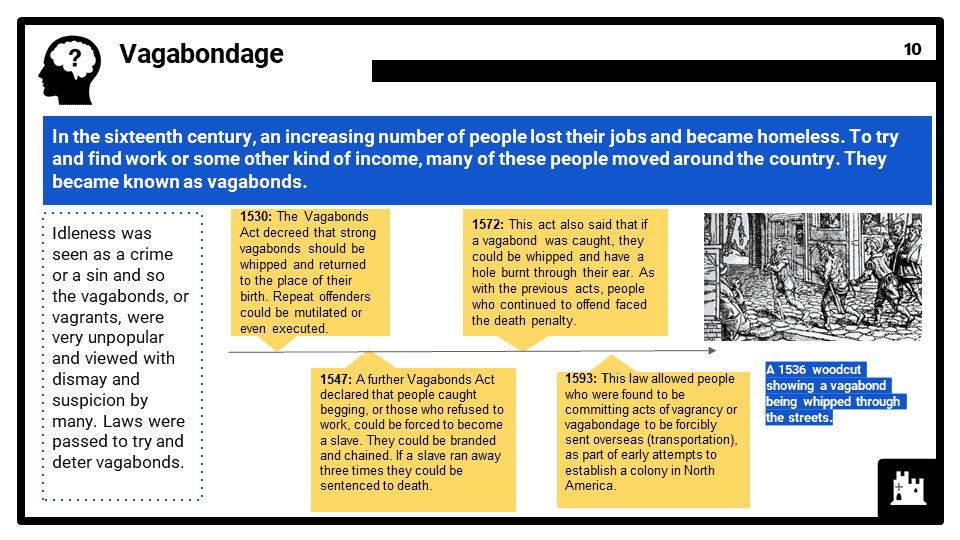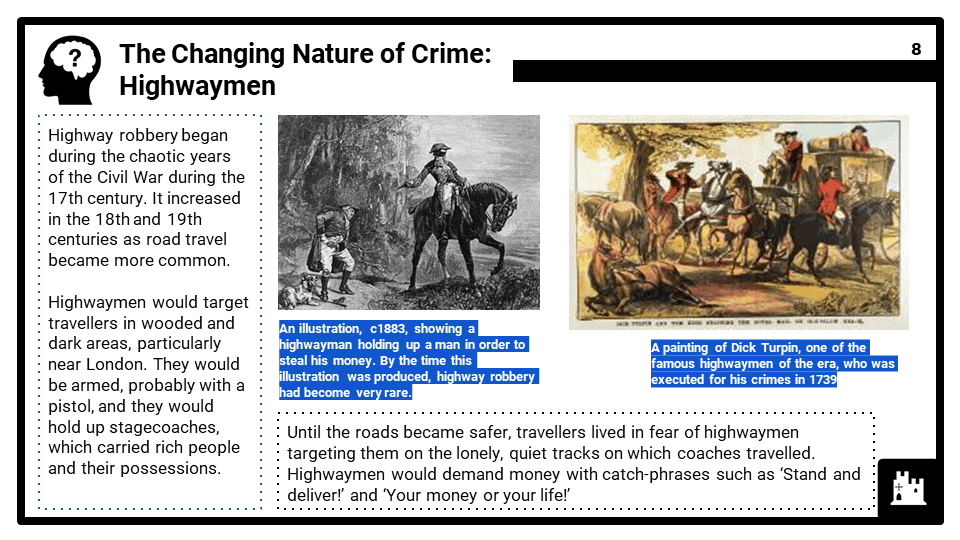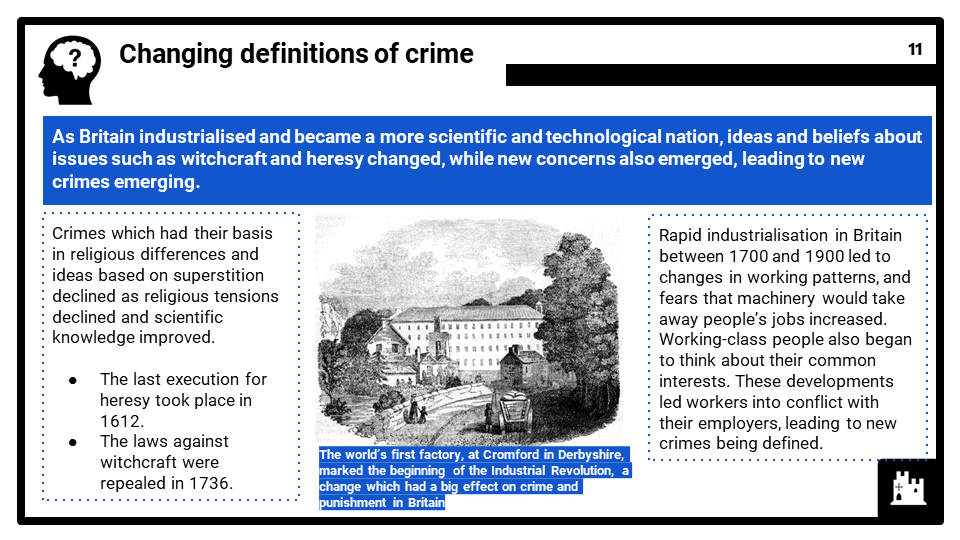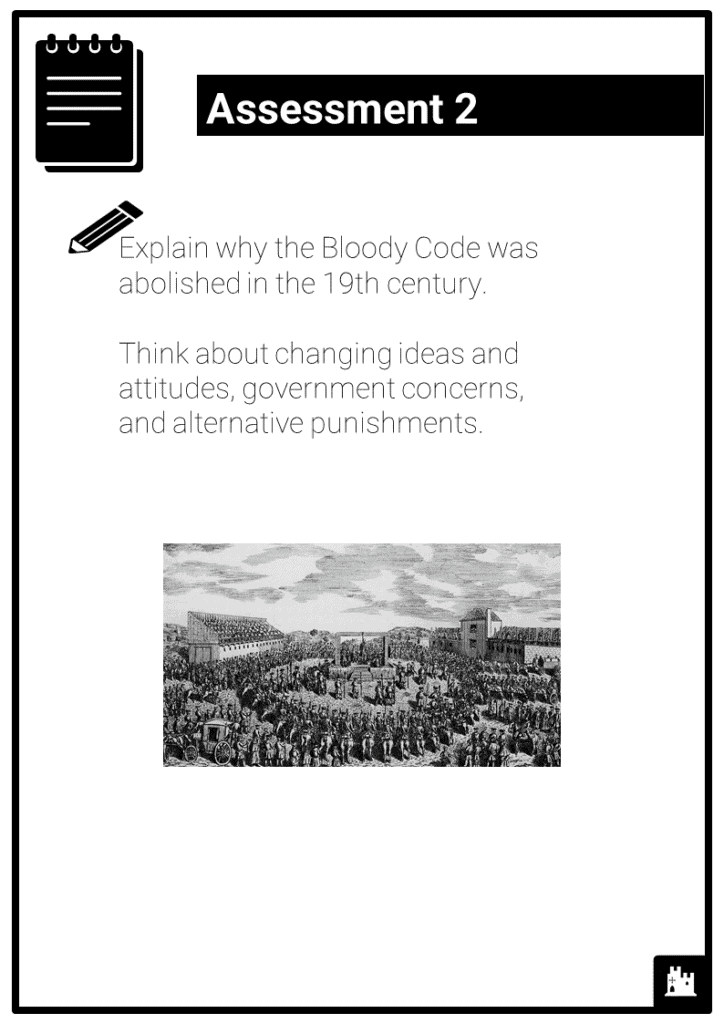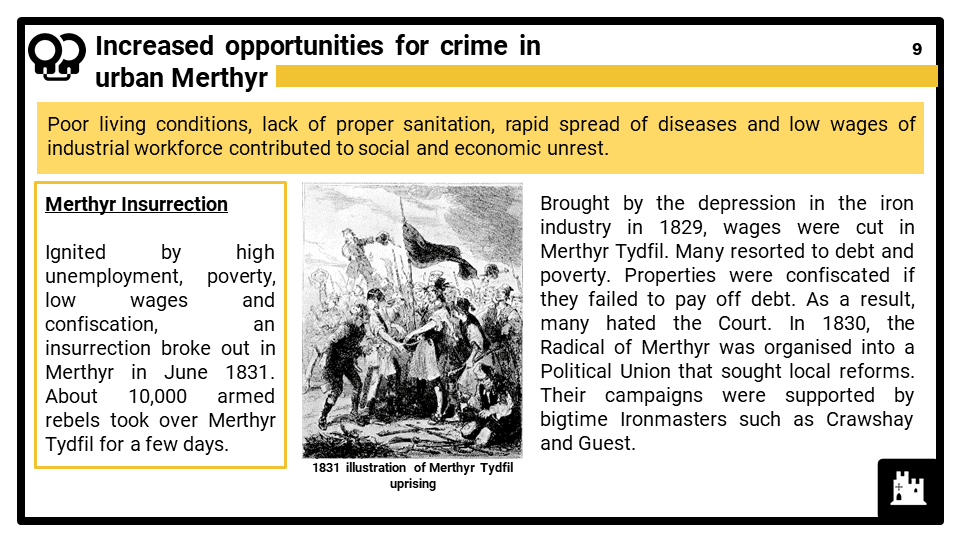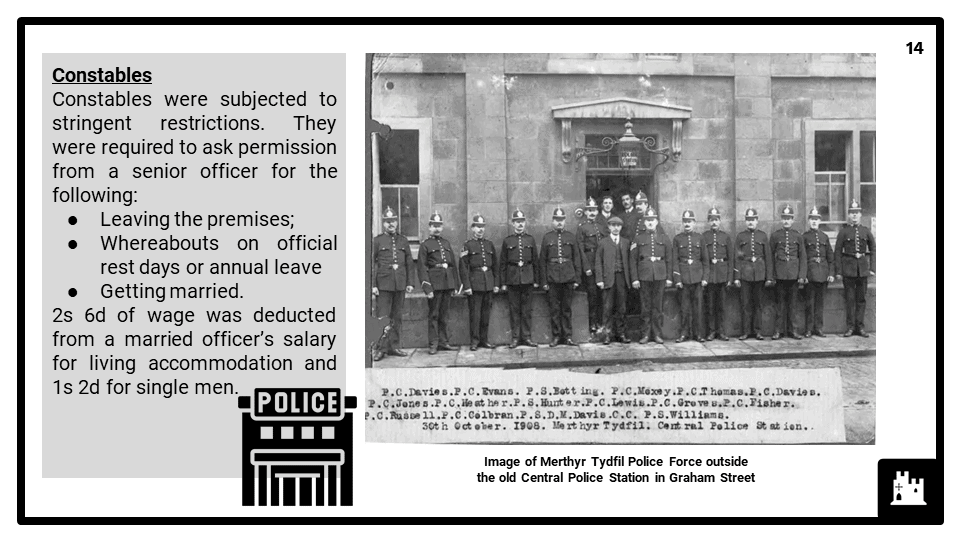Teach any WJEC module : Changes in Crime and Punishment, c.1500 to the present day, no prep needed!
Do you want to save dozens of hours in time? Get your evenings and weekends back? Be fully prepared to teach any WJEC GCSE topic?
Every WJEC topic is covered, and each module comes complete with:
Thematic Studies from a broad historical perspective
Written examination: 1 hour 15 minutes 30% of qualification 60 marks (plus 4 marks for spelling, punctuation and grammar and the use of specialist language)
Learners study one Thematic Study from four options in total. The thematic studies provide learners with the opportunity to study history in breadth and consequently understand the changing nature of developments and issues associated with particular periods within the context of British history. In this unit, the impact of change on Wales should be highlighted within the broader historical context. The thematic studies will also allow learners to understand change and continuity and similarity and difference across long sweeps of history, as well as the most significant characteristics of different ages. The thematic studies will focus study on different historical eras and different geographical contexts if appropriate. This unit encourages learners to develop an understanding of historical concepts in particular, including continuity, change, cause, consequence, significance and similarity and difference. Examination questions in this unit will require candidates to make reference to the impact of changes on Wales or a Welsh perspective and therefore examples of these must be studied.
Unit 3: Thematic studies from a broad historical perspective
Module: 3A Changes in Changes in Crime and Punishment, c.1500 to the present day
This option focuses thematically on the main trends in the history of crime and punishment in Britain from c.1500 to the present day. Foreign content is included only where it is fundamental in its influence. Learners will be required to consider the causes and types of crime, law enforcement, combating and punishment of crime and changing attitudes towards crime and punishment over time. Learners will also be required to examine the major political, social, economic and cultural perspectives which have contributed to the development of both crime and punishment from c.1500 to the present day. In this option, centres should ensure that they focus, where appropriate, on the issues of change, continuity, significance and turning points. In this option, the impact of changes in crime and punishment on Wales should be highlighted within the wider context. As part of this option learners will investigate a historic site connected with this theme. The required content below shows which key features and characteristics of the period must be studied.
Key Questions and Required Content
- Causes of crime: What have been the main causes of crime over time?
- The growth of economic pressures in the Tudor period; the impact of religious change in the sixteenth and seventeenth centuries; the pressures of industrialisation and urbanisation in the eighteenth and nineteenth centuries; twentieth-century pressures including changing technology; the growth of terrorism in the twenty-first century.
- Nature of crimes: How has the nature of criminal activity differed and changed over time?
- Vagrancy and heresy in the sixteenth century; the growth of smuggling and highway robbery in the eighteenth century; crimes connected with urbanisation in the nineteenth century; industrial and agrarian disorder during the Industrial Revolution; the growth of crime in the twentieth and twenty-first centuries associated with the development of the motor car, computers, technology and terrorism.
- Enforcing law and order: How has the responsibility of enforcing law and order changed over time?
- The growth of civic and parish responsibilities in the sixteenth century; the concept and development of organised police forces by the nineteenth century; the changing nature and purpose of policing in the twentieth and twenty-first centuries.
- Methods of combating crime: How effective have methods of combating crime been over time?
- The role and effectiveness of Tudor Justices of the Peace, constables and watchmen; the establishment and influence of the Bow St. Runners; Peel and the setting up of the Metropolitan Police in 1829; the extension of police forces in the nineteenth century; developments in policing in the twentieth century: women police officers, transport, communication, specialisation and community policing.
- Attitudes to punishment: Why have attitudes to punishment changed over time?
- Retribution and deterrence as purposes of punishment over time; the purpose of punishment in public over time; the use of banishment in the eighteenth and nineteenth centuries; the use of prisons to punish and reform in the nineteenth century; changes in attitudes to punishment in the twentieth century: dealing with young offenders, abolition of the death sentence; attempts to rehabilitate and make restitution.
- Methods of punishment: How have methods of punishment changed over time?
- The treatment of vagabonds in Tudor times; the use of public punishment up to the nineteenth century: stocks, pillory and executions; the use of transportation from the 1770s to the 1860s; the need for prison reform: Howard, Paul and Fry; new prisons in the later nineteenth century: the silent and separate systems; alternative methods of dealing with prisoners in the twentieth century: borstals, open prisons, probation and community service.
- A study of a historic site connected with crime and punishment
- The study of the historic environment is an integrated part of the required content for this thematic study outlined above.
The Historic Environment
- The historical context of the site
- The main features of the historic environment
- The significance of the site in terms of crime and punishment


